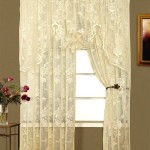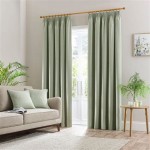Curtain Colors For Living Room: A Comprehensive Guide
Selecting the right curtain colors for a living room significantly impacts the overall aesthetic and ambiance of the space. Curtains are not merely functional window coverings; they contribute to the room's design scheme, influencing light control, privacy, and even perceived room size. A thoughtful approach to color selection ensures curtains complement existing décor, enhancing the living room's style and creating a welcoming atmosphere.
The color of curtains should be carefully considered in relation to several factors, including wall color, furniture hues, the amount of natural light, and the desired mood of the room. Understanding color theory and how different colors interact is crucial for making informed decisions. This guide explores various curtain color options and provides insight into selecting the perfect hues for a living room.
Understanding Color Theory and its Application
Color theory provides a framework for understanding how colors interact and impact visual perception. The color wheel, a visual representation of colors arranged according to their chromatic relationship, is a fundamental tool in color selection. Primary colors (red, yellow, and blue) form the basis of the wheel, and secondary colors (green, orange, and violet) are created by mixing primary colors. Tertiary colors result from mixing a primary color with an adjacent secondary color. Complementary colors, located opposite each other on the color wheel, create high contrast and visual interest. Analogous colors, situated next to each other, offer a harmonious and cohesive look.
When choosing curtain colors, consider the existing color palette of the living room. If the walls are a neutral color, such as white, gray, or beige, there is greater flexibility in curtain color selection. Bold colors, patterns, or textured fabrics can be used to add personality and visual interest. Conversely, if the walls are already painted in a strong color, it's often best to opt for curtains in a complementary or analogous color to maintain balance. A monochromatic approach, using different shades of the same color, can also create a sophisticated and cohesive look.
The psychological effects of color should also be considered. Warm colors, such as red, orange, and yellow, tend to be energizing and stimulating, while cool colors, such as blue, green, and violet, evoke feelings of calmness and tranquility. Neutral colors offer a sense of balance and sophistication. The desired mood and atmosphere of the living room should guide the color selection process. For example, a living room intended for relaxation might benefit from cool-toned curtains, while a room designed for social gatherings could incorporate warmer hues.
Specific Curtain Color Options and Their Impact
The following outlines various curtain color options with details on their specific impact on a living room's overall appearance and ambiance. These selections cover various aspects of specific color groups considering both warm tones, cool tones and neutrals.
White and Off-White Curtains: White curtains are a classic and versatile choice, suitable for a wide range of living room styles. They offer a clean and airy aesthetic, allowing maximum natural light to filter through. White curtains can make a room appear larger and brighter, particularly if the walls are also light-colored. Off-white shades, such as cream or ivory, provide a slightly warmer and softer look, creating a cozy atmosphere without sacrificing light. White and off-white curtains are particularly well-suited for minimalist or Scandinavian-style living rooms, where simplicity and functionality are prioritized.
Gray Curtains: Gray curtains offer a sophisticated and neutral backdrop, complementing a variety of color schemes. Light gray curtains provide a subtle and elegant touch, while darker shades of gray, such as charcoal or slate, create a more dramatic and modern look. Gray curtains are versatile and can be paired with both warm and cool tones. They work well in contemporary or transitional-style living rooms, adding a touch of understated elegance. The undertone of gray also matters; a warm gray will lean brown, while a cool gray will lean blue. Considering this in relation to the existing color scheme will help ensure a cohesive look.
Blue Curtains: Blue curtains evoke feelings of calmness and tranquility, making them a popular choice for living rooms intended for relaxation. Light blue shades, such as sky blue or baby blue, create an airy and serene atmosphere, while darker shades of blue, such as navy or indigo, add depth and sophistication. Blue curtains pair well with neutral walls and furniture, creating a balanced and harmonious look. They are particularly well-suited for coastal or nautical-themed living rooms, enhancing the overall sense of serenity. A patterned blue curtain can also add visual interest without overwhelming the space.
Green Curtains: Green curtains bring a touch of nature into the living room, creating a fresh and inviting atmosphere. Light green shades, such as mint or sage, evoke feelings of tranquility and harmony, while darker shades of green, such as forest green or emerald green, add a sense of richness and depth. Green curtains complement natural materials, such as wood and stone, enhancing the overall sense of organic beauty. They work well in bohemian or nature-inspired living rooms, creating a connection with the outdoors. Choosing a textured green fabric can also add visual interest and tactile appeal.
Yellow Curtains: Yellow curtains add a cheerful and optimistic touch to the living room, brightening up the space and creating a welcoming atmosphere. Light yellow shades, such as pastel yellow or lemon yellow, evoke feelings of joy and happiness, while darker shades of yellow, such as mustard or gold, add a sense of warmth and sophistication. Yellow curtains are best used sparingly, as they can be overpowering if used excessively. They pair well with neutral walls and furniture, adding a pop of color and personality. Yellow curtains are particularly well-suited for eclectic or vintage-style living rooms, enhancing the overall sense of whimsy. Be mindful of the undertone of yellow; some yellows lean towards orange, while others are more muted.
Red and Burgundy Curtains: Red curtains add a bold and dramatic touch to the living room, creating a sense of warmth and energy. Light red shades, such as coral or rose, offer a softer and more romantic look, while darker shades of red, such as crimson or burgundy, add a sense of richness and luxury. Red curtains are best used in moderation, as they can be overwhelming if used extensively. They pair well with neutral walls and furniture, adding a statement piece and focal point to the room. Red curtains are particularly well-suited for traditional or formal living rooms, enhancing the overall sense of elegance. Because red can be a very stimulating color, consider the purpose of the room and whether a more calming environment is desired.
Brown and Beige Curtains: Brown and beige curtains provide a grounding and earthy touch to the living room, creating a sense of warmth and stability. Light beige shades, such as sand or cream, offer a subtle and neutral backdrop, while darker shades of brown, such as chocolate or espresso, add depth and richness. Brown and beige curtains are versatile and can be paired with a variety of color schemes. They work well in rustic or farmhouse-style living rooms, enhancing the overall sense of coziness and comfort. These are good options when a subtle, natural look is desired.
Considering Practical Factors and Design Styles
Beyond color theory and specific hues, several practical considerations should influence the curtain selection process. The amount of natural light entering the room, the level of privacy desired, and the overall design style of the living room play substantial roles in determining the ideal curtain color and fabric.
Light Control: The amount of natural light in the living room is a critical factor in curtain color selection. If the room receives a lot of sunlight, darker colored curtains may be preferable to block out excess light and reduce glare. Conversely, if the room is relatively dark, lighter colored curtains can help maximize the available light and brighten up the space. Sheer or semi-sheer curtains are an excellent option for allowing light to filter through while still providing some privacy. The color of the curtain will also affect the color of light entering the room. A yellow curtain, for example, will cast a warm, golden glow. A blue curtain will cast a cool, bluish tint.
Privacy: The level of privacy desired is another important consideration. If the living room faces a busy street or neighboring building, thicker fabrics in darker colors may be necessary to provide adequate privacy. Lined curtains offer an extra layer of privacy and light control. Alternatively, if privacy is not a major concern, lighter fabrics or sheer curtains can be used to maintain an open and airy feel. Layering curtains, such as combining sheer curtains with heavier drapes, allows for flexibility in both light control and privacy.
Design Style: The overall design style of the living room should guide the curtain color selection process. A minimalist living room might benefit from simple, neutral-colored curtains, while a bohemian-style living room could incorporate bold colors, patterns, or textured fabrics. A traditional living room might opt for classic colors and luxurious fabrics, while a modern living room could feature sleek, minimalist curtains in contemporary colors. Considering the existing furniture, accessories, and architectural details will help ensure a cohesive and harmonious look. The curtains should complement and enhance the overall design aesthetic, rather than clash with it.
Ultimately, the best curtain color for a living room is the one that complements the existing décor, enhances the room's style, and creates a welcoming atmosphere. By carefully considering color theory, practical factors, and personal preferences, any individual can make an informed decision and select the perfect curtains to transform their living room into a beautiful and functional space.

How To Choose The Right Color Curtains For Your Home Deconovo Us

Neutral Curtains Color Tones How To Choose The Shade

Curtain Colour Combination For Living Room Beautiful Homes

The Best Curtain Colors For Every Room

Discover Stunning Curtain Colour Combinations For A Stylish Home Beautiful Homes

Curtains For White Walls Living Room In 2024

Curtain Color Combination For Your Home Designcafe

What Color Curtains Go With Brown Furniture 17 Curtain Ideas

Homebliss The Hippest Community For Home Interiors And Design

Curtains Colour Combination Ideas For Your Home








